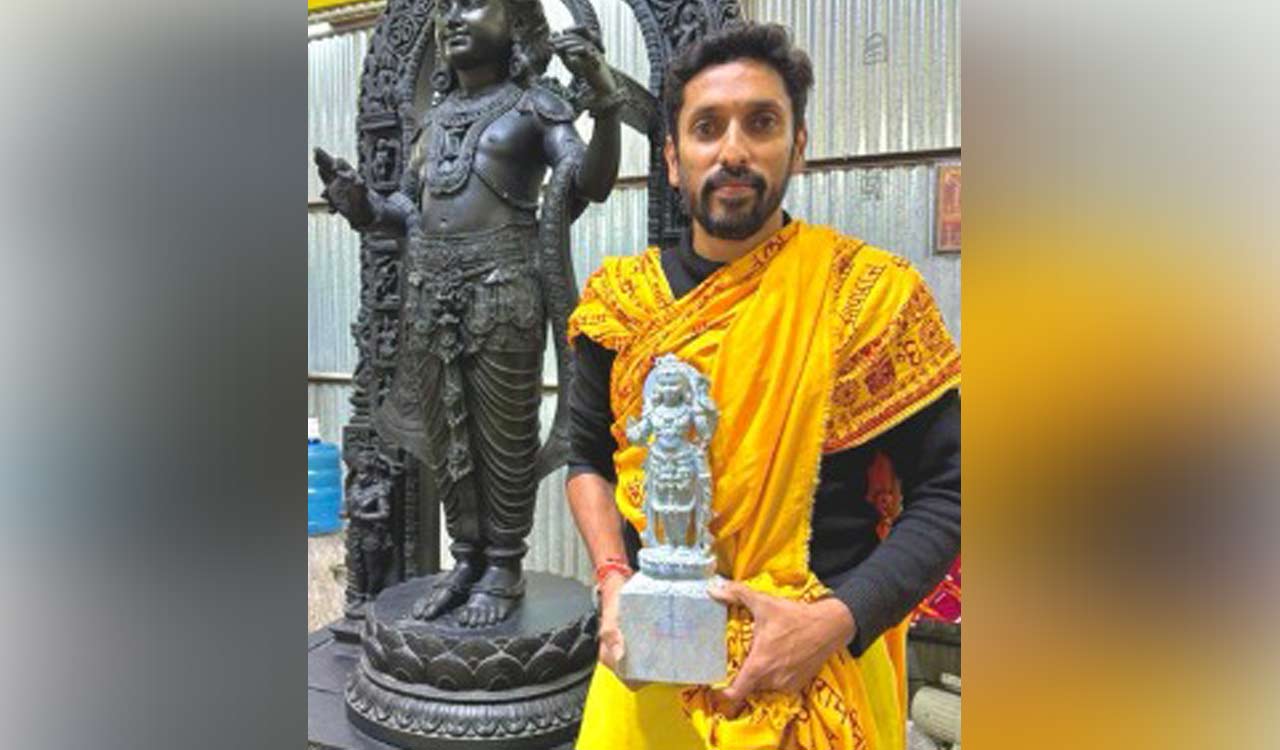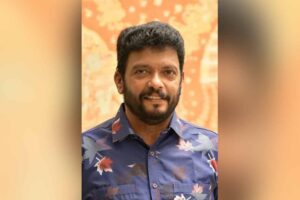“After completing the main idol of Ram Lalla, I sculpted a smaller stone statue of Ram Lalla in Ayodhya,” Yogiraj shared on X while showcasing the pictures.
Updated On – 25 March 2024, 11:54 AM

Ayodhya: Well-known sculptor Arun Yogiraj who created the Ram Lalla idol for the Ayodhya temple, has now made a miniature version of the deity.
The sculptor took to X to share the images which have gone viral.
“After the selection of the main idol of Ram Lalla, I carved another small Ram Lalla statue in stone in Ayodhya,” Yogiraj said on X while sharing the pics.
Earlier, Yogiraj had also shared a picture of the special tools he had used to carve the eyes of the statue.
He wrote, “Thought of sharing this silver hammer with the golden chisel using which I carved the divine eyes of Ram Lalla.”
The 51-inch-tall idol which shows Ram Lalla as a five-year-old standing on a lotus was created by Yogiraj out of Krishna Shila (black schist).
The rock was brought from Karnataka after it was found and excavated during a levelling exercise on an agricultural plot.
After the idol was placed in the sanctum sanctorum of the newly-built Ram temple, the Karnataka-based sculptor had said that he considers himself the “luckiest person” on Earth.
“I feel I am the luckiest person on the Earth now. The blessing of my ancestors, my family members and Lord Ram has always been with me. Sometimes I feel like I am in a dream world,” he had said.
Yogiraj, one of the most sought-after sculptors in the country, comes from a family with a rich legacy of the craft as his father and grandfather were also renowned sculptors.
After completing his MBA, Yogiraj worked in a private company for a while but wanted to follow his ancestors’ legacy.
Since 2008, he has been creating statues and gaining nationwide recognition.
The 30-foot statue of Subhas Chandra Bose, in the grand canopy behind the Amar Jawan Jyoti at India Gate, was also crafted by Yogiraj.
Among his other works, a 12-foot-tall statue of Adi Shankaracharya in Kedarnath and a 21-foot-tall Hanuman statue at Chunchanakatte in Mysore District have been widely appreciated.




